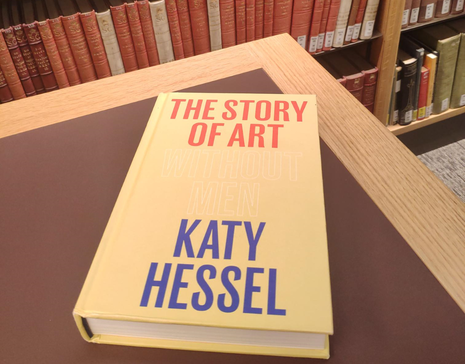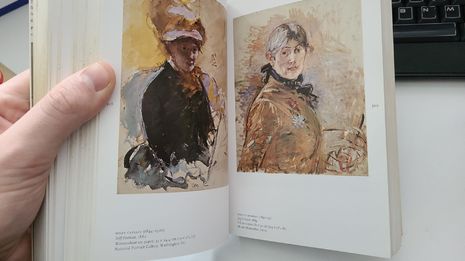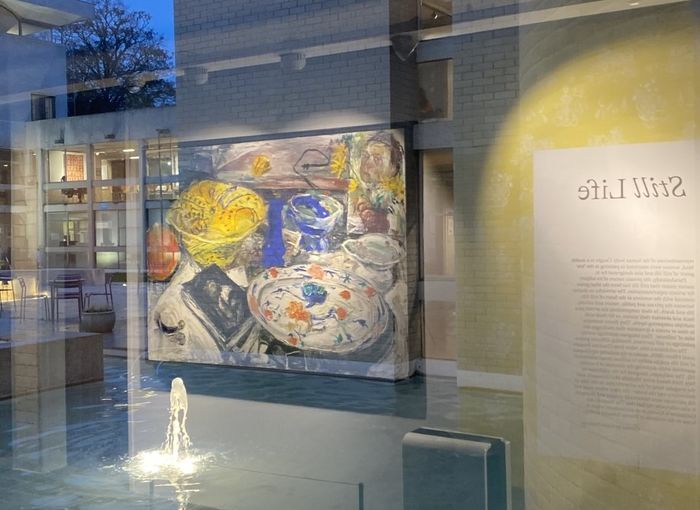‘We weren’t taught to remember the women’: The Story of Art Without Men
Anamaria Koeva reviews The Story of Art Without Men, contemplating the significance of women within the art history canon and their erasure from art history

Working as a Heffers bookseller, I often find myself recommending Katy Hessel’s The Story of Art Without Men, the Waterstones Book of the Year, to customers. So when an acquaintance of mine enters the shop wondering what to buy for his mother, I automatically mention Hessel’s book. I explain that it is a feminist reworking of Ernst Gombrich’s catalogue of the history of art, The Story of Art (1950), which even in its most recent edition, only includes one woman, the German artist Käthe Kollwitz – one step away from The Story of Art Without Women becoming a scarily fitting title. (Fun fact: thinking I’ve never seen or heard about her, I discover that it was Kollwitz’s handprint, taken in 1925 by Marianne Raschig, that was on the promotional materials for The Human Touch Fitzwilliam Museum exhibition in 2021.)
“We weren’t taught to remember the women”
“That’s impossible,” my friend protests – shocked at discovering Gombrich’s exclusion of female artists from the canon and suggesting: “the people who have read only Gombrich probably don’t know much about art to begin with.” He proceeds to prove his point by listing Tracey Emin, Barbara Hepsworth, and Bridget Riley. In an attempt to diversify his examples beyond white British women, I add Frida Kahlo, Tamara de Lempicka, Yayoi Kusama … Then I force myself to name any earlier female artists, but I stall at the late-19th century painter Berthe Morisot. What about that 17th-century Baroque artist my mum once mentioned? My mind goes entirely blank.
Once back at home, I open Hessel’s book in hope of scratching this brain itch. I am oddly relieved to open on page 39 and see a piece by the Baroque artist I recognise – Artemisia Gentileschi’s Judith Slaying Holofernes (1612). I wish I could say my earlier struggle was a case of a memory lapse, but I know that I wouldn’t as easily forget Caravaggio, Bernini, or Canaletto. “We weren’t taught to remember the women,” my friend Jess, an art dealer, responds as we unpick our respective days over WhatsApp, the book back on its shelf.

From afar, at the top of the macaroon-coloured hardback, are the words “The Story of Art” in red, and at the bottom, the name of the author standing out in blue. There is something outlined in the middle, but it’s indistinguishable until viewed up close. “Without Men”, says the cryptic text in an inconspicuous, white outline-only font. I realise that not just the title, but also the cover of The Story of Art Without Men is a play, albeit a visual one, on the edition of Gombrich’s The Story of Art from my childhood. When I was little, its inconspicuous light grey cover with large, embossed letters gave me the feeling that the significance of Gombrich’s canon had been carved in stone. The cover of Hessel’s book turns this notion upside down with one graphic design twist.
“It serves to not only make the future ‘past’ of art less unequal, but also, its future”
However much I enjoy the cover’s wittiness, I cannot shake the unease of my earlier brain-freeze. The Times Literary Supplement reveals that I am not alone, sharing that Hessel’s research “revealed that 30 per cent of the UK population could not name more than three female artists; 83 per cent of those between the ages of eighteen and twenty-four could not name three.” I immediately message all my gallery-hopping friends with the same question: “Top three women artists working before the 20th century, off the top of your head?” While no one can answer straight away, one of them searches his library and sends me the twelve pre-20th century examples from Phaidon’s 500 Self-Portraits.
It makes sense that women at the time painted mainly self-portraits such as these. “It took until the end of the 19th century for women to be allowed to study the nude from life,” writes Hessel, adding that American art historian Linda Nochlin compares this to “a medical student [being] denied the opportunity to dissect or even examine the naked human body”.
Yet, I remember from a later edition of Gombrich’s work, that it only scratched the surface of 20th century art where women were finally allowed these creative freedoms. This scarcity is corrected in Hessel’s book, where 360 of its 450 pages concern post-1900 works. Moreover, Hessel adds in 19th century quiltmaking, an overlooked form of female-mastered visual art. One criticism I have, however, would be that in many countries, such as my home country of Bulgaria, quiltmaking, embroidery, and carpet-weaving were unrecognised forms of art long before the 19th century. This craft used to be many women’s sole outlet for creative self-expression for centuries.
Despite this disadvantage, I am sure that my younger self would not have even considered this a missed opportunity, and the fact that I do now, showcases the positive effects of one’s exposure to diverse art. After all, at the time of leafing through Gombrich’s book, I did not even question its absence of female artists. This gives me one more reason to be grateful for the existence of books like The Story of Art Without Men, because it serves to not only make the future “past” of art less unequal, but also, its future.
 News / Cambridge postgrad re-elected as City councillor4 May 2024
News / Cambridge postgrad re-elected as City councillor4 May 2024 News / Gender attainment gap to be excluded from Cambridge access report3 May 2024
News / Gender attainment gap to be excluded from Cambridge access report3 May 2024 News / Some supervisors’ effective pay rate £3 below living wage, new report finds5 May 2024
News / Some supervisors’ effective pay rate £3 below living wage, new report finds5 May 2024 Comment / Accepting black people into Cambridge is not an act of discrimination3 May 2024
Comment / Accepting black people into Cambridge is not an act of discrimination3 May 2024 News / Academics call for Cambridge to drop investigation into ‘race realist’ fellow2 May 2024
News / Academics call for Cambridge to drop investigation into ‘race realist’ fellow2 May 2024




